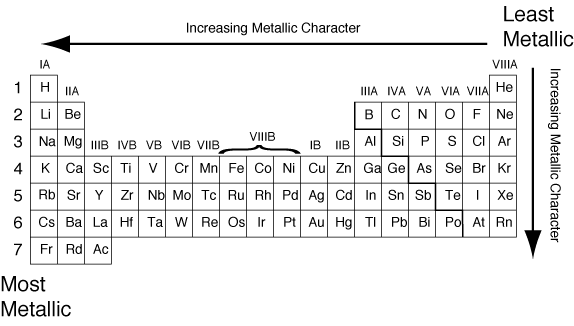
Non-metallic oxides are:
(A) Acidic in nature
(B) Amphoteric in nature
(C) Basic in nature
(D) None of these
Answer
216.3k+ views
Hint: Non-metal oxides such as sulphur dioxide and nitrogen oxide are responsible for acid rain. Using this application of non-metal oxides, try and determine their nature.
Step-by-Step Solution:
Let us first analyse what non-metallic oxides really are before moving on towards the specifics of this question.
All non-metals form covalent oxides with oxygen, which react with water to form acids or with bases to form salts. Most non-metal oxides are acidic and form oxyacids, which in turn yield hydronium ions (\[{{H}_{3}}{{O}^{+}}\]) in aqueous solution. There are two general statements that describe the behaviour of acidic oxides. First, oxides such as sulphur trioxide (\[S{{O}_{3}}\]) and dinitrogen pentoxide (\[{{N}_{2}}{{O}_{5}}\]), in which the non-metal exhibits one of its common oxidation numbers, are known as acid anhydrides. These oxides react with water to form oxyacids, with no change in the oxidation number of the non-metal; for example,
\[{{N}_{2}}{{O}_{5}}~+\text{ }{{H}_{2}}O\to 2HN{{O}_{3}}\]
The non-metal oxides can be neutralized with a base to form salt and water.
\[Non-Metal\text{ }Oxide\text{ }+\text{ }Base~\to ~Salt\text{ }+\text{ }Water\]
For example,
$\begin{matrix}
S{{O}_{3(g)}}~+\text{ }Ba{{\left( OH \right)}_{2(aq)}}~\to ~BaS{{O}_{4(aq)}}~+\text{ }{{H}_{2}}{{O}_{(l)}} \\
{{P}_{4}}{{O}_{10(s)}}~+\text{ }12\text{ }NaO{{H}_{(aq)}}~\to ~4\text{ }N{{a}_{3}}P{{O}_{4(aq)}}~+\text{ }6\text{ }{{H}_{2}}{{O}_{(l)}} \\
\end{matrix}$
Generally, the more metallic character an element has, the more basic its oxide will be. Likewise, the more non-metallic character an element has, the more acidic its oxide will be. The non-metallic character of an element can be determined by its position on the periodic table:


Therefore, per our analysis, the answer to this question is a) Acidic in nature
Note: Most non-metal oxides are acidic, but not all. For example, carbon monoxide (CO) is not acidic.
The addition of water to a non-metal oxide results in a compound that consists of a non-metal atom surrounded by oxo (=O) and hydroxy (-OH) groups. For example,
\[S{{O}_{3\left( l \right)}}\text{ }+\text{ }{{H}_{2}}{{O}_{\left( l \right)}}\text{ }\to \text{ }{{H}_{2}}S{{O}_{4\left( l \right)}}\]
Step-by-Step Solution:
Let us first analyse what non-metallic oxides really are before moving on towards the specifics of this question.
All non-metals form covalent oxides with oxygen, which react with water to form acids or with bases to form salts. Most non-metal oxides are acidic and form oxyacids, which in turn yield hydronium ions (\[{{H}_{3}}{{O}^{+}}\]) in aqueous solution. There are two general statements that describe the behaviour of acidic oxides. First, oxides such as sulphur trioxide (\[S{{O}_{3}}\]) and dinitrogen pentoxide (\[{{N}_{2}}{{O}_{5}}\]), in which the non-metal exhibits one of its common oxidation numbers, are known as acid anhydrides. These oxides react with water to form oxyacids, with no change in the oxidation number of the non-metal; for example,
\[{{N}_{2}}{{O}_{5}}~+\text{ }{{H}_{2}}O\to 2HN{{O}_{3}}\]
The non-metal oxides can be neutralized with a base to form salt and water.
\[Non-Metal\text{ }Oxide\text{ }+\text{ }Base~\to ~Salt\text{ }+\text{ }Water\]
For example,
$\begin{matrix}
S{{O}_{3(g)}}~+\text{ }Ba{{\left( OH \right)}_{2(aq)}}~\to ~BaS{{O}_{4(aq)}}~+\text{ }{{H}_{2}}{{O}_{(l)}} \\
{{P}_{4}}{{O}_{10(s)}}~+\text{ }12\text{ }NaO{{H}_{(aq)}}~\to ~4\text{ }N{{a}_{3}}P{{O}_{4(aq)}}~+\text{ }6\text{ }{{H}_{2}}{{O}_{(l)}} \\
\end{matrix}$
Generally, the more metallic character an element has, the more basic its oxide will be. Likewise, the more non-metallic character an element has, the more acidic its oxide will be. The non-metallic character of an element can be determined by its position on the periodic table:


Therefore, per our analysis, the answer to this question is a) Acidic in nature
Note: Most non-metal oxides are acidic, but not all. For example, carbon monoxide (CO) is not acidic.
The addition of water to a non-metal oxide results in a compound that consists of a non-metal atom surrounded by oxo (=O) and hydroxy (-OH) groups. For example,
\[S{{O}_{3\left( l \right)}}\text{ }+\text{ }{{H}_{2}}{{O}_{\left( l \right)}}\text{ }\to \text{ }{{H}_{2}}S{{O}_{4\left( l \right)}}\]
Recently Updated Pages
JEE Atomic Structure and Chemical Bonding important Concepts and Tips

JEE Amino Acids and Peptides Important Concepts and Tips for Exam Preparation

Electricity and Magnetism Explained: Key Concepts & Applications

Chemical Properties of Hydrogen - Important Concepts for JEE Exam Preparation

JEE Energetics Important Concepts and Tips for Exam Preparation

JEE Isolation, Preparation and Properties of Non-metals Important Concepts and Tips for Exam Preparation

Trending doubts
JEE Main 2026: Application Form Open, Exam Dates, Syllabus, Eligibility & Question Papers

Derivation of Equation of Trajectory Explained for Students

Hybridisation in Chemistry – Concept, Types & Applications

Understanding the Angle of Deviation in a Prism

Understanding Collisions: Types and Examples for Students

How to Convert a Galvanometer into an Ammeter or Voltmeter

Other Pages
NCERT Solutions For Class 11 Chemistry Chapter 7 Redox Reaction

JEE Advanced Marks vs Ranks 2025: Understanding Category-wise Qualifying Marks and Previous Year Cut-offs

NCERT Solutions ForClass 11 Chemistry Chapter Chapter 5 Thermodynamics

Thermodynamics Class 11 Chemistry Chapter 5 CBSE Notes - 2025-26

Equilibrium Class 11 Chemistry Chapter 6 CBSE Notes - 2025-26

Understanding Atomic Structure for Beginners




